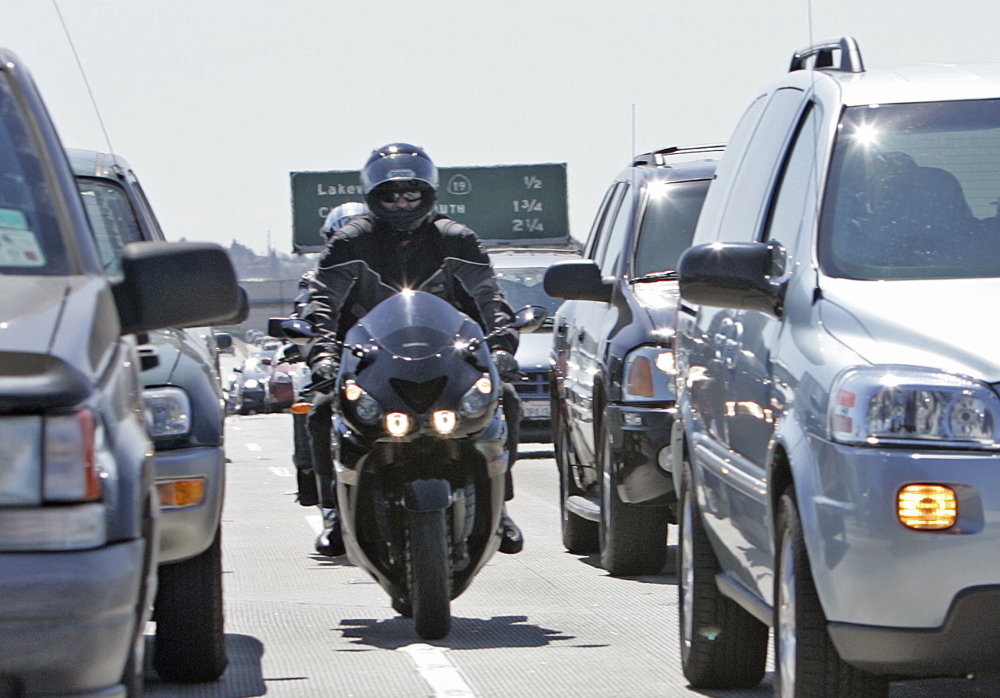LOS ANGELES — A study on which new California legislation is based says lane-splitting is relatively safe for motorcyclists – even safer than not lane-splitting.
The exhaustive University of California, Berkeley study, a copy of which was obtained by the Los Angeles Times, reviewed 6,000 motorcycle-involved traffic collisions between June 2012 and August 2013. Almost 1,000 of those accidents involved lane-splitting.
The study’s research shows that lane-splitting motorcyclists were considerably less likely to experience serious injury from their accidents than motorcyclists who were not lane-splitting at the time of their collisions.
The findings are important, because they are the basis for pending legislation passed in the California Assembly this week, and headed for a vote in the Senate.
The proposed new law would permit motorcycle lane-splitting in California, provided the motorcyclist is not moving more than 15 mph faster than surrounding traffic, and not moving at more than 50 mph.
The legislation, proposed by Assembly members Bill Quirk, a Democrat, Tom Lackey, a Republican, and Kansen Chu, a Democrat, would make California the first U.S. state to allow lane-splitting.
The Berkeley study, written by professor Thomas Rice of the Safe Transportation Research and Education Center, suggested that the same “speed differential” found in the Quirk-sponsored bill was relatively safe for riders.
Proposing a safe “speed differential” of 15 mph and a top speed of 50 mph – at which the motorcyclists were not moving more than 15 mph faster than the surrounding traffic – Rice’s study said riders were at increased risk with increasing speeds.
“Both traffic speed and motorcycle speed differential were significantly associated with the occurrence of head, torso and extremity injury,” the study found. “We found that motorcycle speed differential is a stronger predictor of injury than was the overall traffic speed.”
The study also found that lane-splitting motorcyclists were safer bikers in general than their non-lane-splitting counterparts.
Using data compiled by California Highway Patrol officers at accident sites, Rice found that lane-splitters wore better helmets, were less likely to be speeding and were less likely to be riding under the influence of alcohol.
Who’s doing all this riding, lane-splitting and crashing? The study found that a quarter of the 5,969 accidents involved Harley-Davidson motorcycles, with somewhat fewer involving Hondas, followed in order by bikes made by Yamaha, Suzuki and Kawasaki.
More than 90 percent of the riders involved in the accidents were male. More than 60 percent were under 45. Only 80 percent had proper licenses.
Copy the Story LinkSend questions/comments to the editors.



Success. Please wait for the page to reload. If the page does not reload within 5 seconds, please refresh the page.
Enter your email and password to access comments.
Hi, to comment on stories you must . This profile is in addition to your subscription and website login.
Already have a commenting profile? .
Invalid username/password.
Please check your email to confirm and complete your registration.
Only subscribers are eligible to post comments. Please subscribe or login first for digital access. Here’s why.
Use the form below to reset your password. When you've submitted your account email, we will send an email with a reset code.